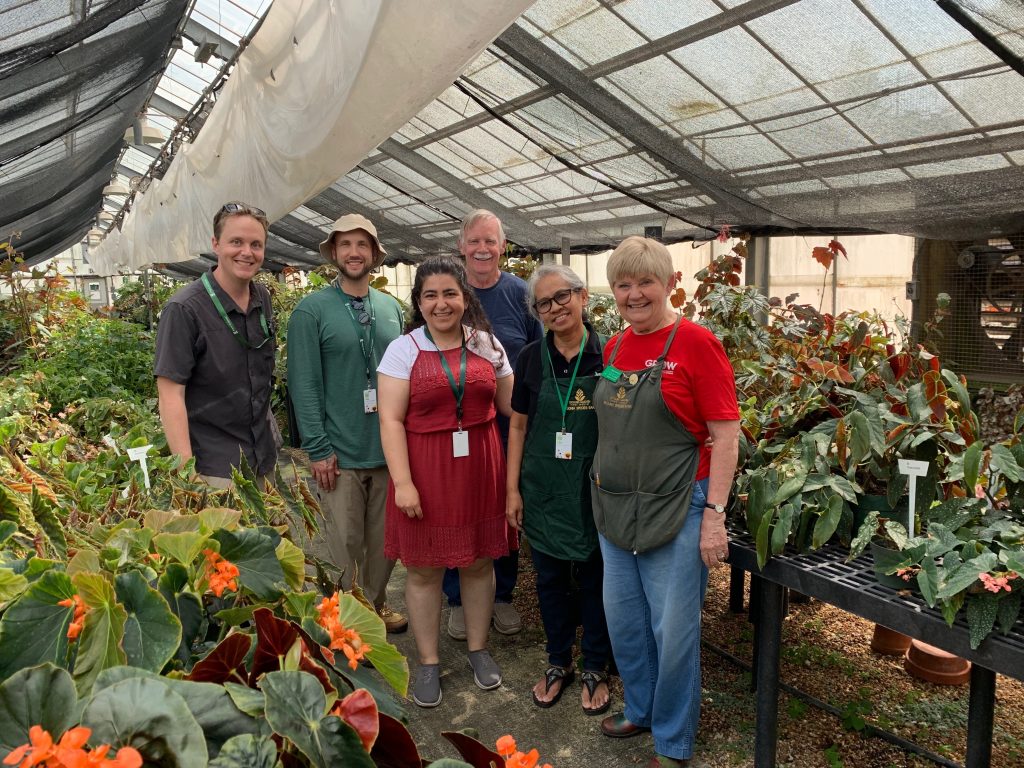This article was written by GGI-Gardens Summer 2019 Fellow, Seth Hamby.
Texas is a state that you can drive through for 7 hours and still be in Texas, believe me we did it this summer! Because of its geographic location, geology, and rainfall gradient, Texas supports tons of different ecoregions, ecotones, and microhabitats that foster some of the highest biodiversity in the country, second only to California (obligatory “boo! hiss!”). Coming into the GGI-Gardens Fellowship I didn’t really know what to expect. I figured that we would devote most of our time to lab work and only get a few chances to go collecting out in the field. Little did I know that we would travel thousands of miles, spend countless hours in the field, collect amazing botanical wonders, and meet some of the coolest plant nerds on the planet (Fig. 1)! I can say with confidence that this summer has been one of the greatest experiences of my life! Not only did I gain valuable botanical and field experience, but there’s nothing like spending a week in a car to discover who you really are as a person!

The summer began at our home base where we were introduced to all the fabulous members of the BRIT family and toured the world class campus as well as the grounds of the Fort Worth Botanic Gardens. Some of our first field collection days were at the FWBG where my favorite highlight was visiting the Begonia House (Fig.2), which boasts one of the largest collections of Begonia on Earth! We also visited local gems like the Fort Worth Nature Center and Tandy Hills Natural Area. Our first out of town trip was to the Lady Bird Johnson Wildflower Center. We stayed in an adorable Airbnb, watched the Brazilian freetail bats emerge from the Congress Avenue bridge, and rode electric scooters all around downtown Austin. At LBJWC we spent three days collecting representatives of the flora of (mostly) north-central Texas.

Our next adventure took us to the sticky, sweltering paradise that is the greater Houston area in July. While there we had the pleasure of visiting one of the most unique places in the state, Peckerwood Garden (Fig. 3). This garden boasts an impressive collection of flora from Mexico, Asia, and the U.S., many of which no longer exist in the wild. We also visited the resilient and beautiful Mercer Botanic Gardens that were completely inundated by floodwaters from Hurricane Harvey and have since recovered beautifully.

We ended our summer with the mother of adventures to the rugged and gorgeous Trans-Pecos region. My only experience in the area was from driving through twice, both times at night, so I was really taken aback by the stunning and seemingly impossible beauty. Superficially it seems as if the landscape is rather desolate with pockets of life few and far between. But upon further investigation you realize that the area is a rich biodiversity hotspot (Fig. 4). I am reminded of a quote by Henry Miller that says, “the moment one gives close attention to anything, even a blade of grass, it becomes a mysterious, awesome, indescribably magnificent world in itself.” During our trip to the Trans-Pecos, I am excited to announce that I accepted a position as Head Gardener at the Chihuahuan Desert Research Institute! I am forever grateful for my experiences this summer as a Fellow with GGI-Gardens.

Seth Hamby was a 2019 GGI-Gardens Summer Fellow at BRIT and contributed this blog as a part of his fellowship experience.





